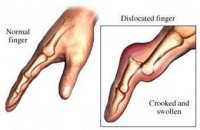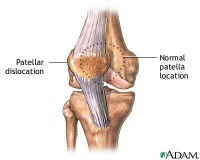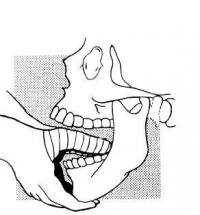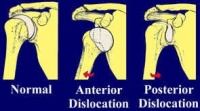Checking Range of Motion
Jump to navigation
Jump to search
Reference
10.09 CHECKING RANGE OF MOTION
“Checking range of motion” is a guideline for the assessment of damage in the dislocation of certain joints. During this assessment the joint may reduce to the correct position. The patient should still have the joint evaluated further for injury and or fractures.
The pain of these types of dislocation can be largely from muscle spasms of the area. The first goal is to try to convince the patient to relax the muscles in the area. Their immediate reaction is going to be protection of the joint and the thought of “movement” will be mentally unbearable. Coaching and psychological techniques can help. Give appropriate medications such as Nitrous Oxide or other medications in the SEDATION/ANALGESIA PARAMETER (2.04) as necessary.
Fingers (with poor circulation):

- Apply pressure and massage the muscle proximally to the dislocation
Knees:

- Knee joint: Approx 50% of knee joint dislocations have vascular compromise. Consider a Trauma center if this is suspected.
- Patellar (knee cap) dislocations - relax the quadriceps (hyperextend) straighten the leg while “assisting” the knee cap back into normal position.
Jaws:

- Masseter muscle (yawning with TMJ): Place thumbs on the teeth in the lower jaw. Slowly pull down and forward. Remind the patient to relax.
Shoulders:

- Anterior (90% of dislocations)- the direction of the dislocation is forward and the patient is holding the extremity.
- While the patient is relaxing support the extremity at the wrist and under the elbow. Slowly raise the extremity to place the palm on the head. Massage the shoulder muscles as necessary.
- Posterior (10% or dislocations) – Arm is above the head or the direction of the dislocation is to the back.
- DO NOT REDUCE